Rewards programs are nearly ubiquitous, employed by brand new e-commerce startups and Fortune 500 companies alike. These programs can provide significant value to customers through discounts and other incentives to further engage with the brand.
Unfortunately, many companies only think of rewards programs as the next-generation of coupon clipping and fail to see the greater benefits they could be receiving.
While rewards do influence immediate purchasing decisions, the true power of rewards programs extends far beyond promotions and discounts.
Customer loyalty does not come just by providing individual discounts, but rather by consistently providing an excellent customer experience. The best rewards programs focus on building deep, long-lasting relationships with shoppers and reap benefits that go far beyond the economics of the sale at hand.
Here are ways that rewards programs can have a positive impact on long-term business goals.
Identify With Your Target Market
It’s easy to tack on a rewards program as an afterthought, but if you view rewards as a plug-in, chances are, your customers will too.
A rewards program isn’t just about giving customers a small boost towards a purchase. It’s also an opportunity to show customers what matters to your brand. Whether you build it in-house or use a third-party incentive marketing tool, every part of the rewards program—from the copy to the web design—should reflect brand aesthetics and value.
Targeted Incentives
There are many ways to engage customers with rewards. To make rewards effective, incentivize customers to take actions that matter the most to your brand and that make the most sense in the customer journey.
For example, new site visitors who subscribe to a newsletter may be more likely to return than those who do not. Try using a simple pop-up window that asks visitors to subscribe to a newsletter, and track the conversion rates from both the pop-up and the newsletter campaign. Consumers are used to seeing these prompts, and it’s worth A/B testing different designs and offers to perfect the incentive.
Birchbox’s subscriber prompt explains the benefits of subscribing (“first dibs on freebies, offers, and 15% off”) and asks for an additional piece of information to provide a more customized experience from the start.
The one-time discount may act as the hook that draws new shoppers in, but it’s the continuous value delivery of ongoing rewards and relevant content that will keep shoppers engaged well beyond the first purchase.

Brands that have an active community may get more value out of product reviews. Product reviews guide purchasing decisions, strengthen your brand’s authority in the space, and improve conversion. Rewarding customers for product reviews is a great way to earn more reviews for your inventory.
Everlane sends customers an email requesting a review a few weeks after an item has been shipped. This gives customers adequate time to form an opinion of the product. Product reviews may be even more important to a brand like Everlane, since they pride themselves on transparency.
To incentivize participation, Everlane offers a gift card for future purchases, creating a cycle of customer engagement. The language that Everlane uses is casual, a little quirky, and full of gratitude.
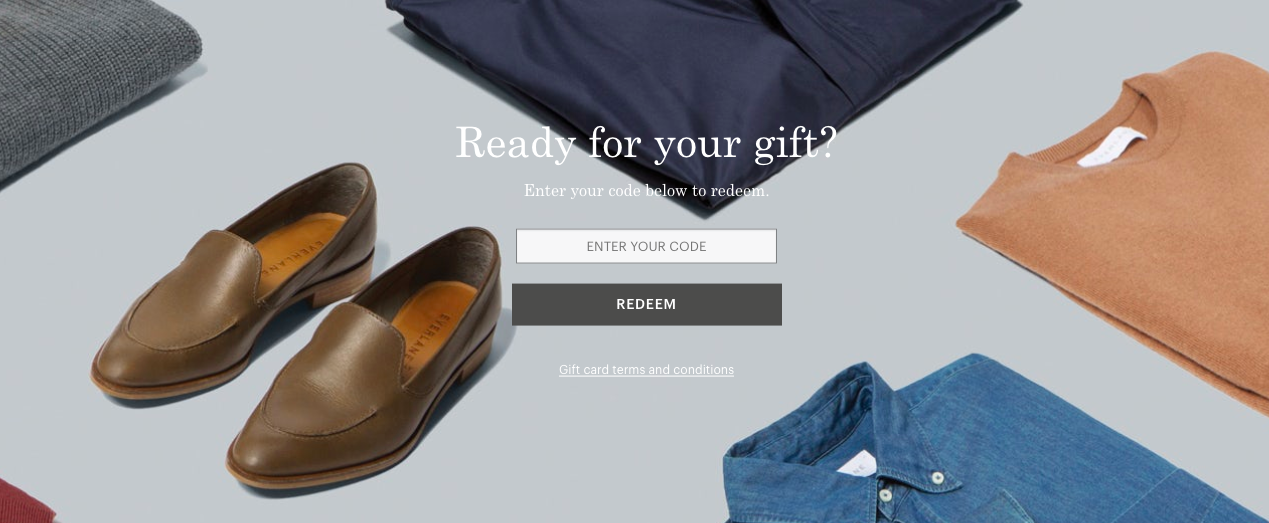
Copy and Design
A rewards program should go through the same product positioning and marketing rigors as any other page on your site. Use the same language that customers are accustomed to using and associating with your brand (if you’re unsure, a little bit of surveying and market research can go a long way).
Soko Glam’s copy for introducing Soko Rewards hits all the right notes: it builds excitement for the rewards program, it outlines the benefits, and it conveys Soko Glam’s brand vision. The rewards program isn’t just about discounts; it’s part of the customer journey to “healthy, glowing skin.”
Just as importantly, Soko Glam emphasizes the effortlessness of joining Soko Rewards (it’s something that you do “as you shop”). The easier it is to participate in a rewards program, the more likely customers are to participate.
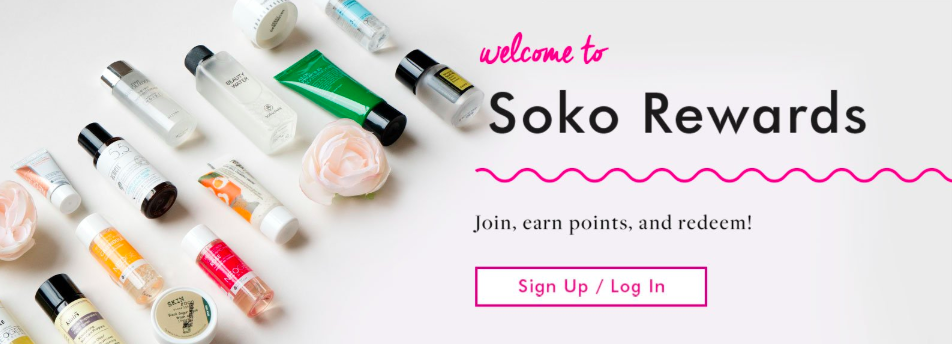
Increase Word-of-Mouth Marketing
Word-of-mouth marketing is one of those acquisition strategies that everyone wants to do but few companies truly master. Unlike other acquisition channels that can be tweaked and perfected outside of product development (i.e. advertising and SEO), word-of-mouth marketing is a direct signal that customers love your product enough to associate their name with it. Word-of-mouth is the primary driver behind 20-50% of all purchasing decisions and can make a big difference on the bottom line.
Two-sided rewards programs
Rewards programs that drive referrals are common among e-commerce brands and tech products. Paypal’s and Dropbox’s early referral programs fueled spectacular early growth and have spawned many similar 2-sided programs. The concept is straight-forward: if a customer refers another successful customer, both will gain a reward that has monetary value.
Rent the Runway offers $30 off their monthly subscription service to customers who refer and customers acquired through referrals. Their landing page even has a nice touch of personalization. Just like in real life, alluding to the friend who made the introduction is an easy way to make new customers feel more welcomed.
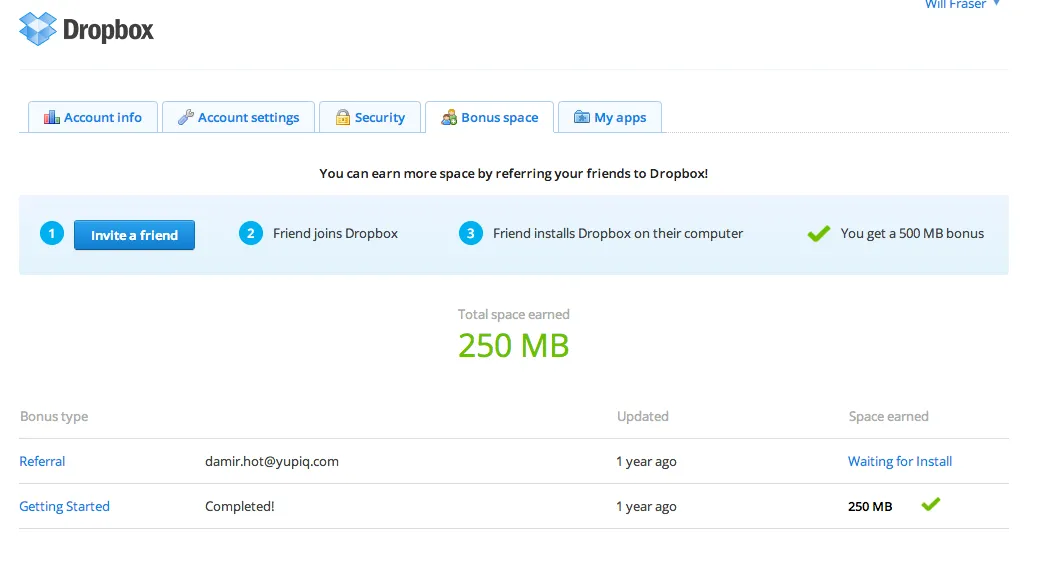
Once new shoppers access a referral link, they’re prompted to start shopping. If they don’t take advantage of the promo code immediately, Rent the Runway uses a persistent banner to remind new referrals as they browse the site. The message is a friendly nudge to get started and saves shoppers from digging through old emails for the promo code.
Social media engagement
While classic 2-sided rewards programs remain successful and popular, there are now even more ways to increase word-0f-mouth marketing. Rewarding customers for social media engagement amplifies your brand presence and helps customers earn more frequently and for smaller actions. Even if customers aren’t able to influence a purchase from their friends, they can still participate.
GLD Shop’s rewards page gives customers several ways to engage with the brand on social media. The highest rewards are for purchases and referrals who have converted, but customers who haven’t reached those big milestones can still earn points along the way. Achieving a big reward—for example, 2000 coins for spending over $500—can take time and a few purchases. Customers could easily forget about a rewards program during that time. Small and easy steps allow for more chances to engage and build momentum towards bigger rewards.
Relationships With Brand Advocates
If you have an engaged community, you may already have brand advocates who love your brand and are willing to recommend it to their friends and social media followers. Brand advocates may be prominent bloggers or vocal contributors to online communities. These people love feeling like they’re in-the-know and having access to the latest products.
A rewards program should recognize and foster this special group of customers with strategies mentioned here, including referrals, VIP programs that allow invitations, and samples that can be shared.
Increase the Perceived Value of Your Products
Driving scarcity is an age-old sales technique that remains powerful. By adding a veil of exclusivity to your products, you might increase their perceived value and thereby, demand.
Rewards and exclusivity might not seem like they would go hand-in-hand, but there are a few ways that rewards programs can create and demonstrate scarcity.
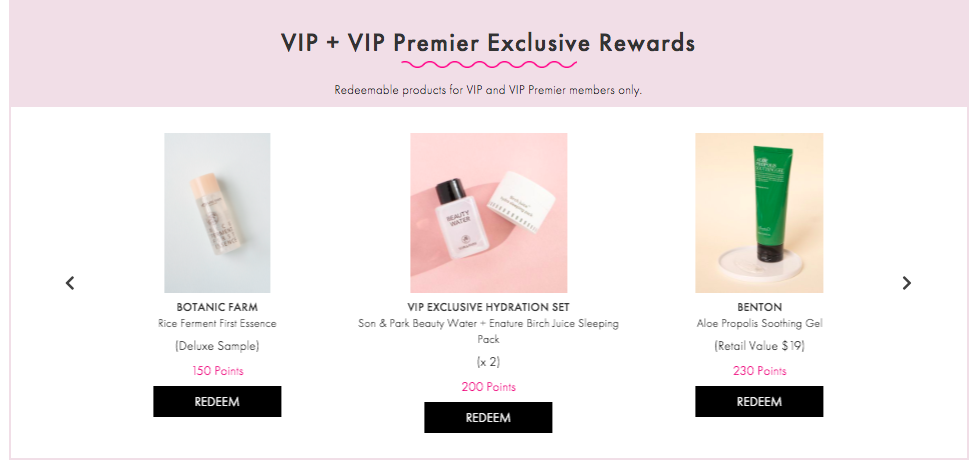
Limited Time Offers
Offering extra points for shopping during specific times is the most direct way to reward customers for participating in an exclusive event. “Double point” days or items can provide just the adrenaline rush to customers who are on the fence about making a purchase.
Airlines offer sophisticated loyalty programs and frequent offers for travelers. United Airlines uses a limited time triple miles benefit to promote a recent partnership deal. For travelers who already use United Airlines and Hilton Hotels, participating in the promotion is a no-brainer and requires little upfront work. The copy in the email consistently drives urgency (“limited-time offer expires soon,” “register today,” “Register now”).
Membership Tiers
Membership status is a form of exclusivity that can incentivize customer behavior, especially for rewards programs that already have a good level of engagement.
The Elephant Pants rewards customers with points that determine status in the rewards program. In addition to monetary discounts at specific point values, The Elephant Pants also offers point multipliers at each “VIEP” stage. This program truly rewards engagement: the more points a customer earns, the more potential they have for earning more.
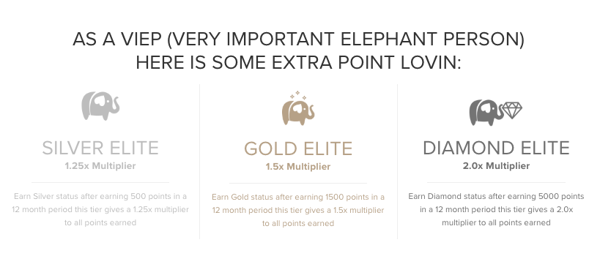
Exclusive Point-Based Products
For the ultimate touch of exclusivity, offer loyal customers special products or perks that can only be redeemed through rewards. This is a direct way to thank your most loyal customers and give them access to products they would not otherwise have.
Sephora’s rewards program gives Beauty Insiders the chance to redeem points for select, mini-sized beauty products. This incentive has a built-in upselling strategy: if customers already know they love a sample, they’re more prone to buy a full-sized version of the product. Since beauty products depend greatly on the individual, avid beauty shoppers love collecting samples and trying what works best before committing to a pricey purchase. It’s a win-win.
Plant the Seeds for Continuous Customer Engagement
Rewards programs have the power to influence a habit of engagement, which can make a big difference on the cost of customer acquisition and lifetime value. Over 50% of consumers would consider increasing the amount of business they do with a company for loyalty rewards.
A well-crafted rewards program is the beginning of a long customer relationship. Even happy customers can easily forget your brand without gentle reminders and compelling incentives. A rewards program can keep customers in the loop and remind them of your product long after the first purchase. Look beyond the discount at hand, and instead, build a program that keeps delivering long-term value to customers.






